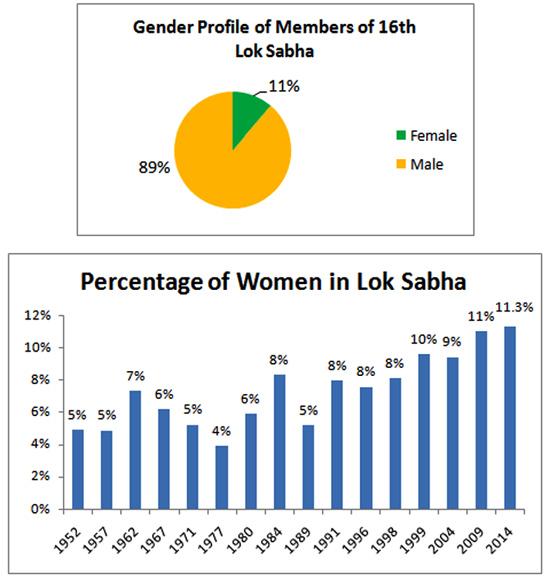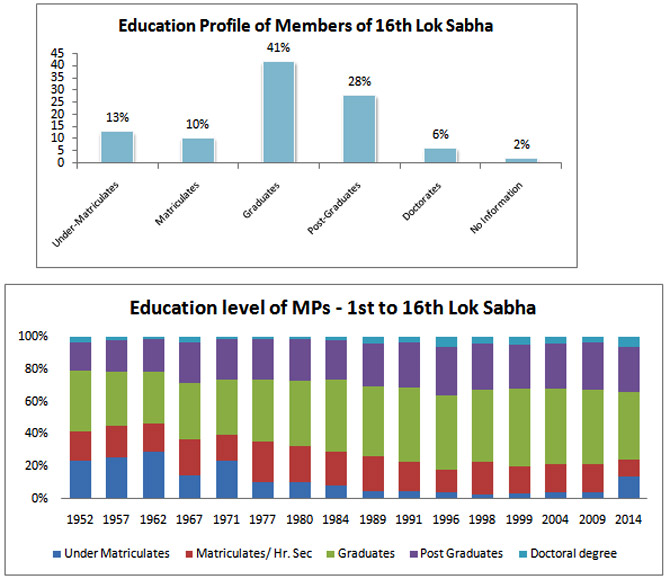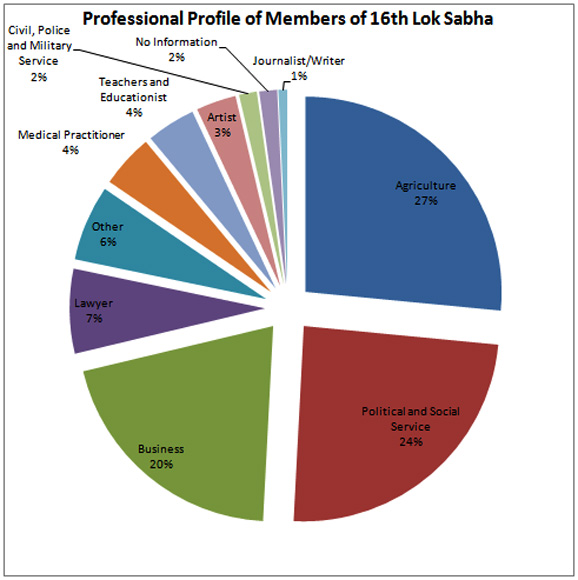Photographs: PRS Legislative Research
The country on Friday elected 543 Members of Parliament to the 16th Lok Sabha. Here is a brief profile of the MPs gender, age, education and professional profiles.
The 16th Lok Sabha will have a record number of 61 women leaders as compared to 59 women MPs elected during the previous General Elections.
However, the figure is a far cry from the 33 per cent mark that Women's Reservation Bill seeks to implement. The bill is pending in Lok Sabha after being passed in the Upper House of Parliament.
The number was lowest at 19 in 1977 elections.
Women leaders account for just 11 per cent of the 543 parliamentarians, while 89 per cent of seats are being represented by men.
"Of the 543 MPs elected, 61 are women. This is the highest number of women MPs elected to the Lok Sabha in the history of the country, although by a small margin," according to a report by PRS Legislative Research.
Apart from Sonia Gandhi, Hema Malini and Maneka Gandhi, other prominent women elected to the 16th Lok Sabha include Kirron Kher, Poonam Mahajan, Sushma Swaraj, Uma Bharti, Dimple Yadav, Moon moon sen and Meenakshi Lekhi.
...
Only 13 per cent of elected MPs under the age of 40
Of the 543 253 (47 per cent) MPs elected to the 16th Lok Sabha are over the age of 55.
In the 15th Lok Sabha, the percentage of MPs over the age of 55 was 43 per cent. This is the largest number of MPs to be elected to the Lok Sabha who are above the age of 55 in the history of the country.
Interestingly, the Lok Sabha has been getting older every election since independence.
Only 71 MPs (13 per cent) have been elected to the Lok Sabha in this election who happen to be under the age of 40.
...
75 per cent of MPs have at least a graduate degree
Of the MPs elected in the 2014 general elections 75 per cent have at least a graduate degree.
This is slightly lesser than the 15th Lok Sabha in which 79 per cent of MPs held at least a graduate degree.
Interestingly, the percentage of MPs elected in the 2014 general elections who do not have a matriculate degree is significantly higher in this election (13 per cent) in comparison to the 15th Lok Sabha (3 per cent).
At the same time, the number of MPs with just a matriculate degree has decreased in the 16th Lok Sabha to 10 per cent from 17 per cent in the 15th Lok Sabha.
The number of members with a doctoral degree has also increased in the 16th Lok Sabha to 6 per cent from 3 per cent in the 15th Lok Sabha.
...
Agriculture is the primary occupation of 27 pc of elected MPs
In the 16th Lok Sabha, 27 per cent of MPs elected have listed agriculture as their primary occupation, followed by political and social work (24 per cent) and business (20 per cent).
If we compare this with the 15th Lok Sabha, we find that 28 per cent MPs had listed political and social work as their occupation, 27 per cent had listed agriculture, while 15 per cent had listed business.
Going back to the very first Lok Sabha that was formed in 1952, we find that the single largest occupation of members was that of lawyers (36 per cent), followed by agriculture (22 per cent) and business (12 per cent).





article